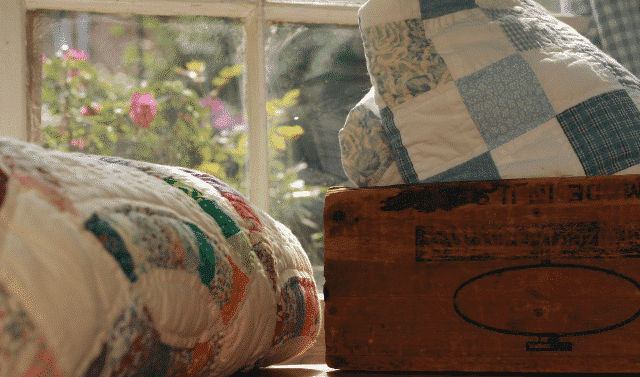Sign up for the Family Tree Newsletter! Plus, you’ll receive our 10 Essential Genealogy Research Forms PDF as a special thank you.
Get Your Free Genealogy Forms
"*" indicates required fields

To a genealogist, a name can mean everything. To those who collect signature quilts, a name can be just the starting point. Here, we’ll explain more about these unique keepsakes.
What are Signature Quilts?
Signature quilts are quilts that contain multiple names either sewn in or stamped on them. Signature quilts have been a part of the American needlework landscape since the 1600s, but they rose to prominence in the 1830s and 1840s.
Lori Chase, quilt historian and curator of the exhibit “Women’s Writes: Signature Quilts and Their Stories,” at the New England Quilt Museum, explains that typically, women made the quilts to commemorate birthdays, anniversaries, migrations west or other momentous events. Community members would sign the completed quilt, usually in ink but sometimes in embroidery. Later on, signatories could ink steel stamps fitted with interchangeable letters to impress initials and even fanciful designs on quilts.
These seeming products of domesticity could take on political significance. Women used them to support certain causes, for example, women’s suffrage or temperance. It was a bold move, back then, for a woman to affix her name to a quilt supporting either of these causes, yet it was a rare opportunity to express her political views. “I’m amazed by how feisty these women were,” Chase says.
Signature quilts also became central to raising funds, especially for Civil War soldiers. “Women would sell a place on their quilts for something like 10 cents,” Chase says. One quilt in the museum’s exhibit features 1,100 signatures—an indication of just how much could be raised. Even more money came in if the quilt was raffled off.
How to You Find the Stories Behind Signature Quilts?
“Signature quilts are readily available at antique shops and auctions,” Chase says. Because they were such trends in their day (and are still being made), thousands are available. For genealogists who get their hands on these quilts, it’s intriguing to find the story behind the names.
“We use triangulation research to document our signature quilts,” says New England Quilt Museum spokesperson Christina Inge. Researchers there consult three sources—local records, census records and cemetery records—to learn more about quilt signers.
It’s not just about collecting the names, though, Chase says. “I want the story behind the names—who the people were, where and how they lived.” She tells of a New Hampshire quilt in her own collection (opposite, see below). “I suspected it was Quaker by the way it was dated,” she says. Quakers used ordinals instead of the month’s name; Chase’s quilt bore the date “the sixth month of 1857.”
Chase checked the 1850 census of Weare, NH, where a Quaker settlement once thrived. She found there all the names on her quilt, even arranged in the same order. At the cemetery in Weare where the Quaker families were buried, plots for each family also echoed the order of signatures. Additional research, Chase says, showed the quilt had been given to an outsider, a sister of a member of the Quaker community, who’d visited Weare. Quilts in the museum’s exhibit reveal similar fascinating stories.
Historic Signature Quilts
Quaker Signature Quilt
Lorie Chase owns this 1857 quilt from a Quaker community in Weare, NH. It was given to “Sister Susan” following her visit there. Susan wasn’t from the community, but was a sister of one of the Quaker men.

Rolling Pinwheel Signature
This name on a circa-1860 quilt exemplifies the intricate flourishes and even illustrations—printed with steel stamps—that often decorate signature quilts.

Mississippi Signature Quilt Top
This quilt top from 1901 commemorates a reunion of former slaves and others associated with the Dixie Plantation in Garden City, Miss. Northerners made the first four rows of blocks; Southern whites made the next four rows and former slaves made the last four.

New Hampshire Signature Quilt
Constructed in 1865 by Carrie Foster of West Henniker, NH, this quilt design is known as the Autograph Cross or Album Block. It bears not only signatures, but also a verse beginning “Please accept this quilt, my dear friend, to atone for a loss we cannot amend.” The loss suffered by the quilt’s recipient is unknown.

A version of this article appeared in the July 2010 edition of Family Tree Magazine.






